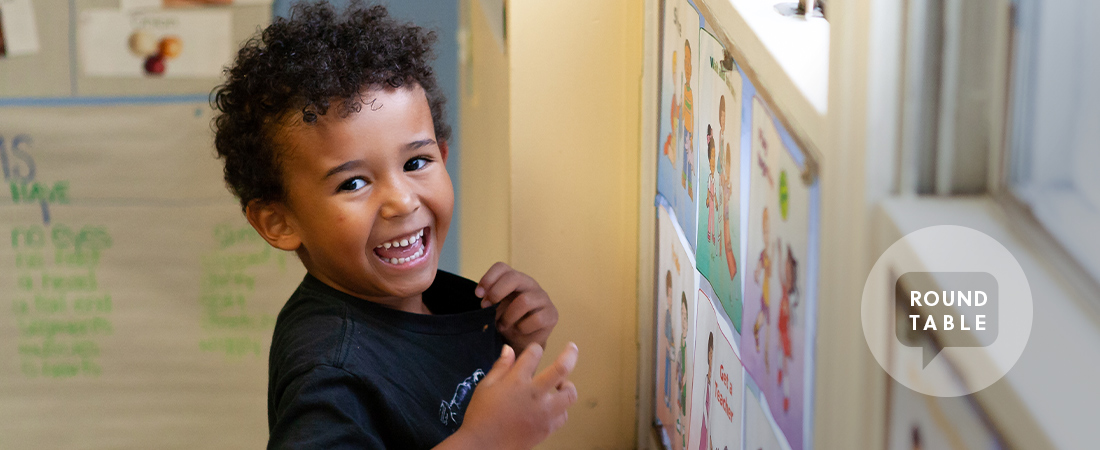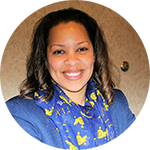School is Coming Back. Are Kids Ready?

- Rebuilding the Pyramid: Reconnecting after a Break
- Helping Children Cope
- NCASE ACEs Resources (adverse childhood experiences)
- Resources to Support Adults, Parents, Children, and Families During the COVID-19 Pandemic
- Trauma-Informed School Strategies during COVID-19
- Transitioning to Trauma-Informed Practices to Support Learning (video)
This year’s back-to-school season is unlike any other in history. Not only do schools have to figure out whether they will welcome students back virtually or in person, but many children are returning to school having suffered trauma due to the COVID-19 pandemic. How can schools effectively meet their academic and emotional needs?
EDC’s Katari Coleman, Jennifer Leonardo, and Nancy Topping-Tailby discuss the mental health impact of the pandemic on children in pre-K through grade 5, and how parents and educators can help pave the way for a smooth re-entry into school.
Q: Most children haven’t been to school in person since early spring. What are some of the mental health-related challenges they may face when they return to school this fall?
Coleman: Recently I was talking to a friend who shared that her second grader asked her, “What is the point of going back to school? Infection rates are rising!” So this is how children are talking—they are intellectualizing this situation.
Leonardo: One of my children is expressing anxiety about going back to school and bringing COVID-19 back to the family. My child hears things like “kids are super spreaders,” and it creates anxiety that children are going to hurt somebody they love.
Topping-Tailby: What a burden that is to carry! Kids make sense of the world from their relationships with their loved ones, and they’re seeing that their families are really stressed right now. A lot of the routines they had that made the world feel predictable and safe and helped to manage anxiety are not in place. So along with anxiety, there’s fear and a sense that they don’t really understand what’s going on.
Q: How could these mental health issues impact academic achievement and behavior in the classroom?
Coleman: In some communities where COVID-19 has been a really big problem—especially where we see health disparities and inequities—children are coming back to school in grief mode. How are they dealing with that? How is that affecting them physically? Emotionally? It’s going to be hard for them to focus. And that’s without even considering the educational gaps that this pandemic has caused.
Leonardo: That educational gap is really important. Some parents have hired private tutors to work on math or reading, and some have contracted public school teachers to teach their kids privately. But many parents have not been able to do that. So I worry about the self-esteem of those kids, their sense of agency, and how they feel about their peers when they go back into school and have to catch up.
Q: What do you think classroom instruction should even look like when kids go back?
Leonardo: Every district will be different. In my district here in Massachusetts, there was a lot of focus on social and emotional learning this past spring. The school held “Wellness Wednesdays.” There were counselors involved to identify children at risk of mental health issues. So I feel that in my smaller community, we can look at the academics now, because we have done some of that work to address mental health concerns already.
Topping-Tailby: I’m thinking about the health disparities that Katari was talking about before. We know that there will be educational disparities resulting from this pandemic, too. Individualizing instruction is always good teaching practice, but teachers will have to do this even more because kids are going to return with such different needs. Educators may feel more pressure to try and catch kids up academically when, really, that’s not what they need.
Coleman: I was recently on a webinar with Dr. Shawn Ginwright. He discussed the importance of starting with considering where our teachers are in terms of their ability to teach the children. And then once the children come back, he says it needs to be at least two weeks of attention to mental health before you introduce hard core academics. And I think this is right, because you really need to focus on establishing new routines and working on children’s social and emotional needs prior to jumping into academics.
Q: We can anticipate that returning to school will be challenging for many kids. What are some things that caregivers or teachers can do if kids are showing signs of anxiety, isolation, or fear?
Coleman: The first thing that they can do is to be consistent in terms of the schedule. Children really thrive off of structure, and for the past few months, structure has really gone to the wayside. So create a schedule, be consistent, and be constant in their life so they know that they are safe and can depend on you. And give them the opportunity to talk about their concerns and anxieties, too.
Topping-Tailby: It’s also important that children try to make meaning of their experiences. It’s ok to acknowledge that it’s been a hard experience, that sometimes you’re worried, too. We’re really trying to normalize the experience of helping kids to express their feelings. And this goes for the classroom, too. We need to support teachers who are also worried about being safe to understand that young children should not be disciplined for struggling to wear a mask. So it’s about being able to be present with kids and help them process what they’re going through.
Leonardo: Parents need to have self-compassion. It’s helpful to think through, what’s my structure? Can I think of two times in a week when I will ask a question or make a statement to give the kids and myself permission to talk about the real challenges, like, “Is anyone feeling nervous about going to school?” or “How are your friends doing?” And even if your kids don’t respond, it at least gives them permission to do so. It opens that door.


